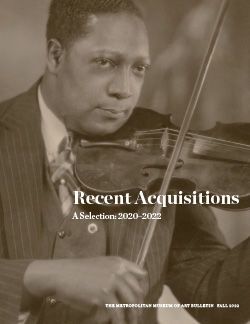The Lightning Testimonies
Amar Kanwar Indian
Not on view
Amar Kanwar's The Lightning Testimonies is an installation of eight synchronized video projections that play on a thirty-two-minute loop. The work is a composite of accounts of women who have experienced sexual violence. Beginning with the partition of India and Pakistan in 1947, it spans several regions and communities and ends with the historic anti-rape protests in Manipur in 2004.
Extensive research by the artist included talking to the women’s relatives as well as to activists, scholars, lawyers and community members. Each narration, rendered in the installation through text in English, appears on multiple screens. The work combines contemporary and archival footage, none of it graphic in nature, to reveal multiple submerged narratives, sometimes in people, images, and the recounting of memories, and at other times in objects from nature and everyday life that stand as silent but surviving witnesses. Accompanied by a soundtrack of understated music and ambient sound, the accounts converge into a single projection, when spoken voice is heard for the first time. In all the stories, the body becomes central—as a site for honor, hatred, and humiliation, and also for dignity and protest.
Through its multitude of voices, the work contests official histories and links diverse episodes to expose how rape functions as a means of social and cultural repression, via often state-sanctioned male violence. Using a range of visual vocabularies, The Lightning Testimonies hopes to transport us beyond the realm of suffering into a space of quiet contemplation, where resilience creates the potential for transformation.
Since its completion, Kanwar has exhibited the work internationally and also presented it within communities affected by this history of violence.
Due to rights restrictions, this image cannot be enlarged, viewed at full screen, or downloaded.


